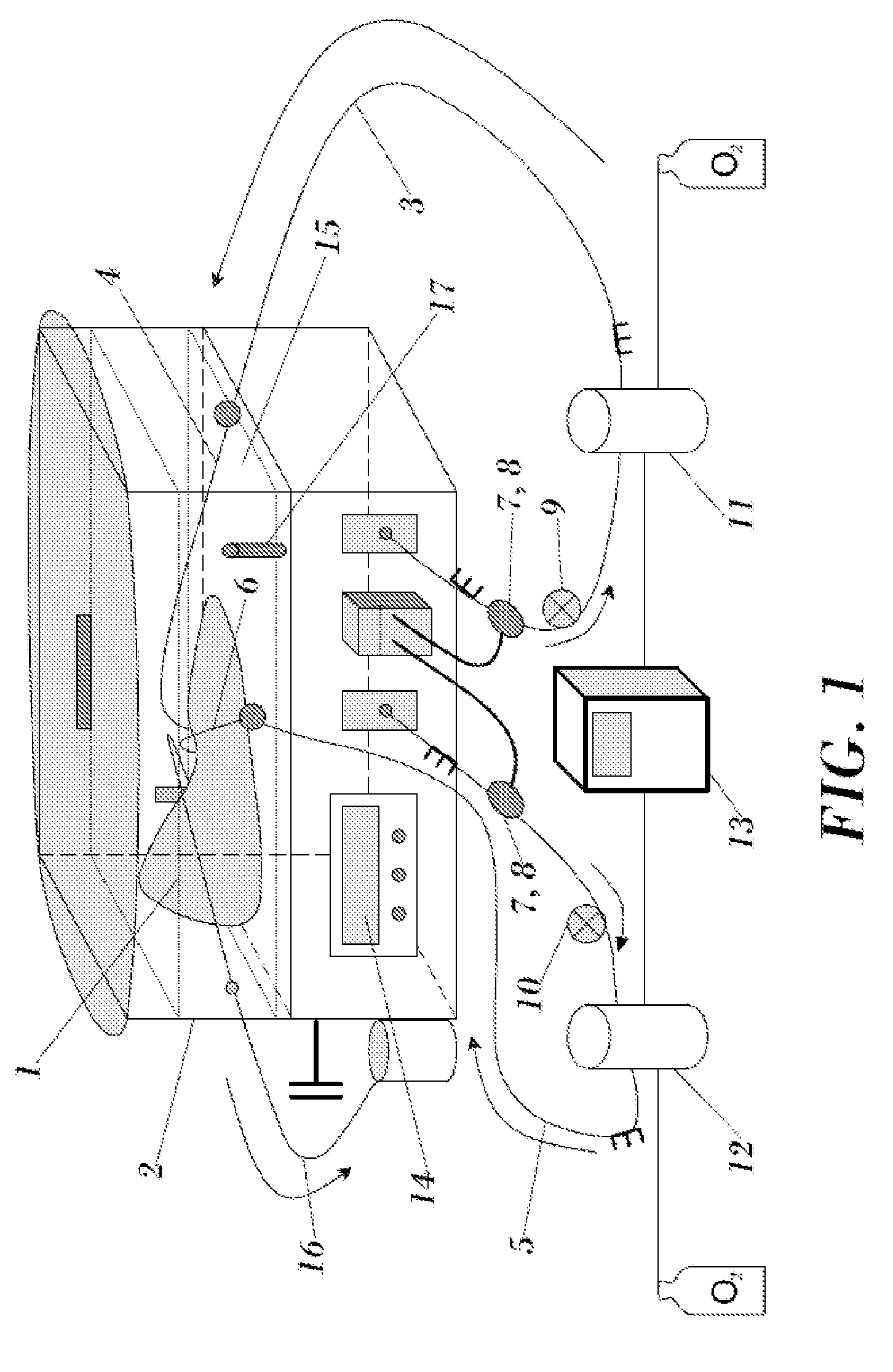Device for the preservation of a hepatic graft in normothermia
a hepatic graft and normothermic technology, applied in the field of organ preservation devices, can solve the problems of low application rate, high incidence of functional failure of hepatic grafts, and ineffective methods
- Summary
- Abstract
- Description
- Claims
- Application Information
AI Technical Summary
Benefits of technology
Problems solved by technology
Method used
Image
Examples
Embodiment Construction
[0014]The invention relates to a device for the preservation of a liver or hepatic graft in normothermia conditions. Normothermia will be considered the storage of the hepatic graft at a temperature considered normal for the human body, i.e., between 35.5° C. and 37.5° C.
[0015]The device of the present invention shall consist of a receptacle in which the hepatic graft will be housed. The hepatic graft in the receptacle will be surrounded by a preservation solution, which will have the characteristics necessary for maintaining the hepatic graft in optimal conditions. Typically, said preservation solution could be whole blood or isolated erythrocytes which will be diluted in another type of solution. The receptacle can be designed such that its closure is sliding and leak-tight, such that once the receptacle is closed, the only ways in and out are the conduits or cannulas which are made.
[0016]In this sense, the device comprises an arterial perfusion circuit, which allows the perfusion...
PUM
 Login to View More
Login to View More Abstract
Description
Claims
Application Information
 Login to View More
Login to View More - R&D
- Intellectual Property
- Life Sciences
- Materials
- Tech Scout
- Unparalleled Data Quality
- Higher Quality Content
- 60% Fewer Hallucinations
Browse by: Latest US Patents, China's latest patents, Technical Efficacy Thesaurus, Application Domain, Technology Topic, Popular Technical Reports.
© 2025 PatSnap. All rights reserved.Legal|Privacy policy|Modern Slavery Act Transparency Statement|Sitemap|About US| Contact US: help@patsnap.com


